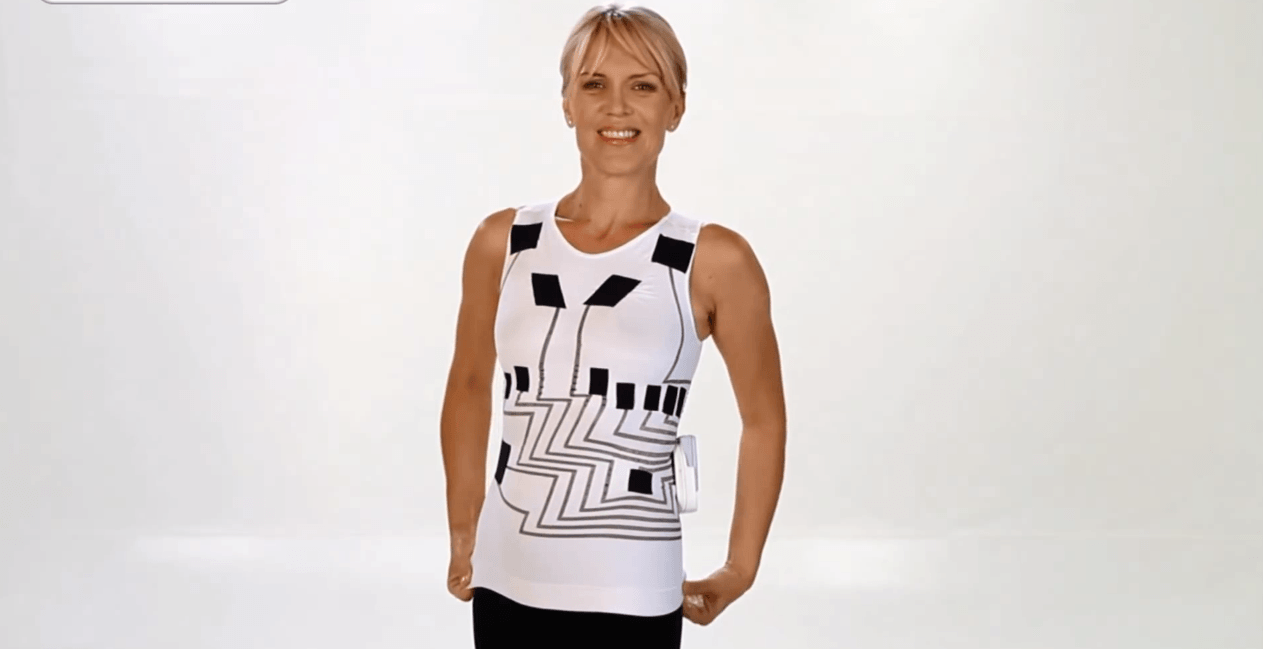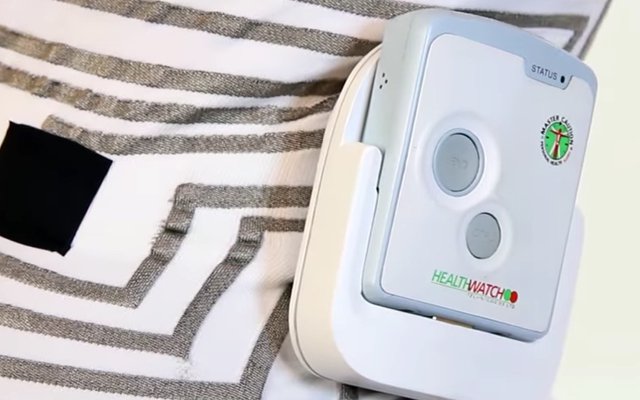Not Wearables News; Master Caution Health Smart Garments Are The Future Of Clothing
NewsTech April 23, 2025 Damon Mitchell

Recently in the news for acquiring $20-million dollars in investment money from Yiling Pharmaceuticals, HealthWatch technologies have developed the future of clothes. The prototypes from HealthWatch are tank tops, woven with smart textiles. They fit and feel like a regular shirt, but do so much more when paired with their MasterCaution device.
The applications for this device and these clothes go beyond the sort of wearable tech we usually cover. At first, we’ll likely see these technologies applied to special populations, aging adults and folks with heart conditions.
In time, manufacturers will weave these technologies into our textiles before fashion companies touch them.
The Clothes

(source: nocamels.com)
The prototypes for this technology looks like standard A-shirts, the ribbed tanks tops our fathers have been wearing for the last century or so. HealthWatch calls them hWear digital garments.
The difference? Through the regular weave of the fabric runs conductive fibers which you can wash. They feel like regular shirt fibers, so comfort is no different than regular clothes. Depending on the shirt, fibers connect to 3-15 ECG monitors. Those monitors can measure skin temperature, respiratory rates, heart rate and even activity or falls.
This is key data for aging adults who want to retain their freedom. HealthWatch produces male and female versions of their shirts, in sizes from medium to triple-XL, and even have different cup sizes for women.
The Device

(source: geektime.co.il)
They call it the MasterCaution, and yes it is an FDA approved and CE cleared device. It connects to the hWear shirt to capture the data, then transmits to the cloud.
The MasterCaution device is not washable, so it must come off for laundering. It fits into a pocket on the shirt and does all the work for the pairing. It can detect heart irregularities, like ischemia or arrhythmias. It can also detect respiratory irregularities.
As mentioned, it detects falls or inactivity, but also tracks temperature and houses an SOS button. The device connects to many different devices, but most will connect it to their phone (iOS and Android).
Alerts and data can forward to any connected phone, so medical professionals can remotely monitor someone wearing the device and shirt. The battery will last for a couple of days, depending on how much it goes online. It keeps 72 hours of data on one charge.
The Future

(source: nasa.gov)
There was a time when only NASA had technology like this. Now it’s in the hands of pedestrians who need help. Soon, especially considering that fitness tracking is not going away anytime soon (it was the main event for wearables at CES 2017), we’ll all wear something like this.
Why not? If you could put on your clothes tomorrow like you normally do, with the benefit of health monitoring, wouldn’t that hold value? Wouldn’t you like to know if there were a concern?
Some people may prefer not to know, but IMHO most of us want to know what’s going on under the hood, even if we don’t know how the engine works. We at least want to know when it’s time to see the mechanic.

(source: rd.com)
It would not surprise this writer to see this tech in athletic wear in a matter or five years, then regular garments in the years that follow.
Consider that we’ve just crossed the ten-year mark for the announcement of the first iPhone. We haven’t even had smartphones for a decade, but they dominate.
We’ve been wearing clothes a lot longer, so we should expect upgrades in short order. HealthWatch is writing that future.